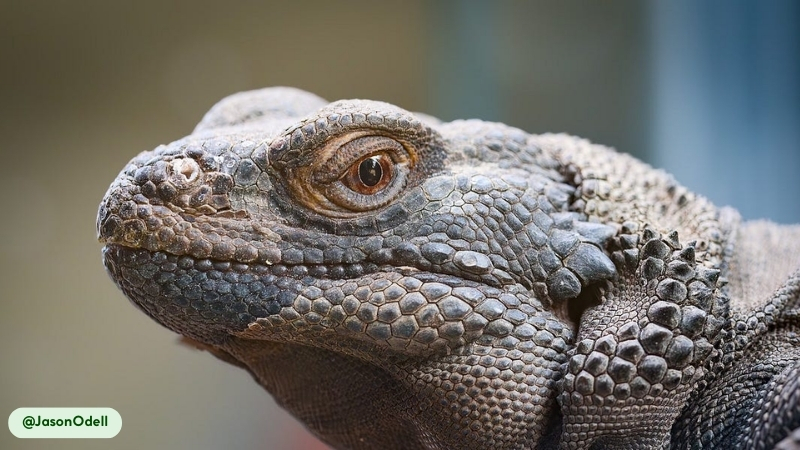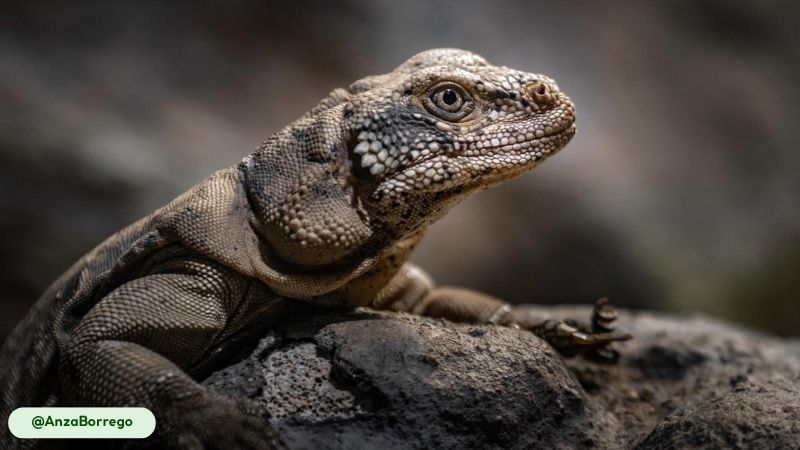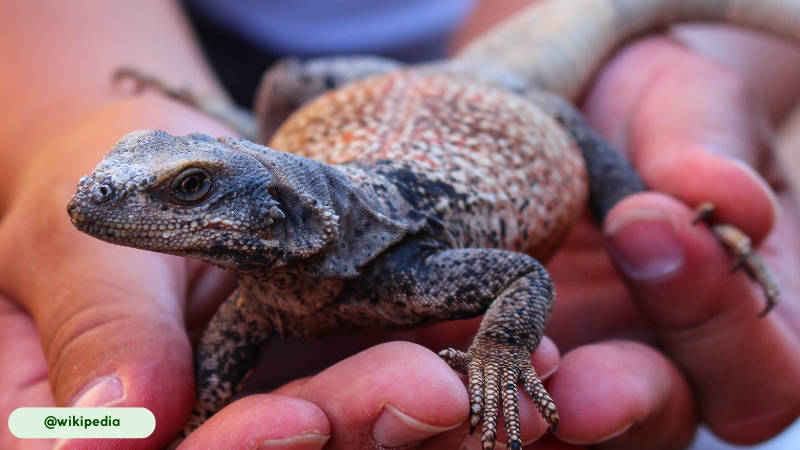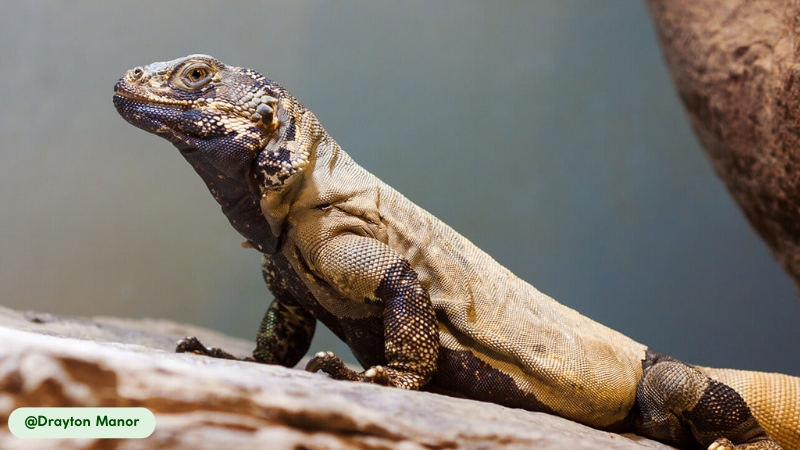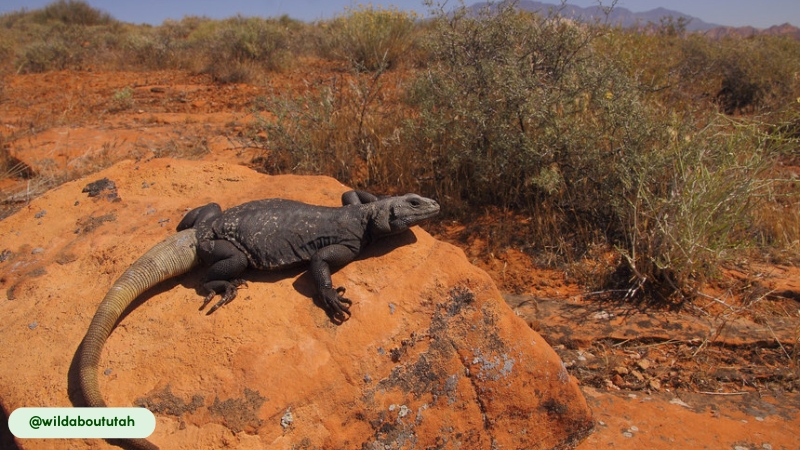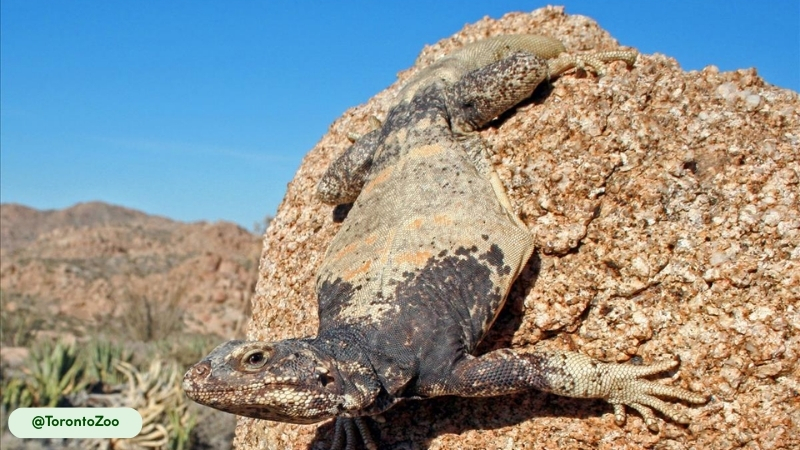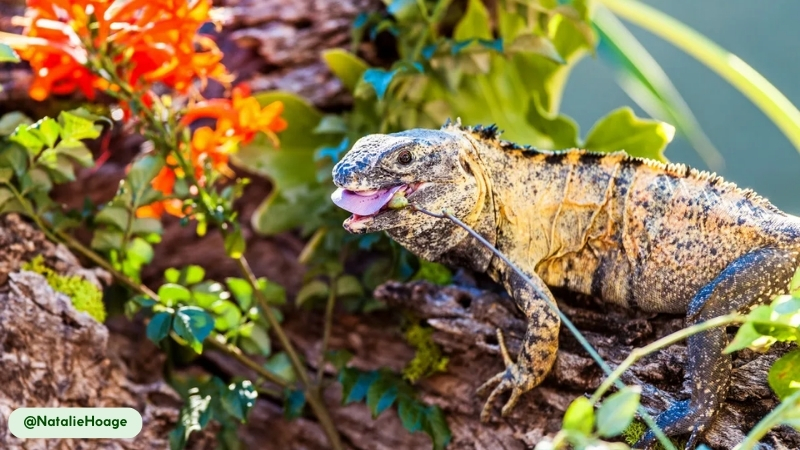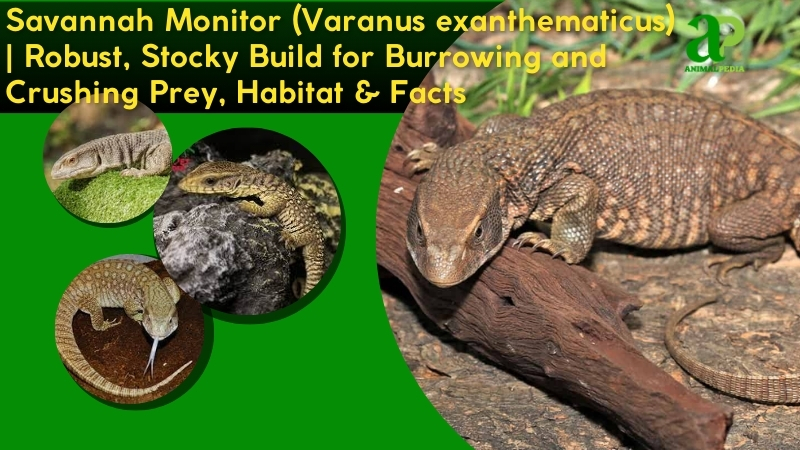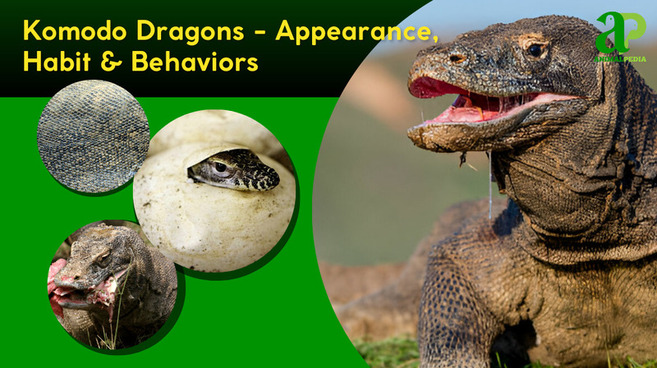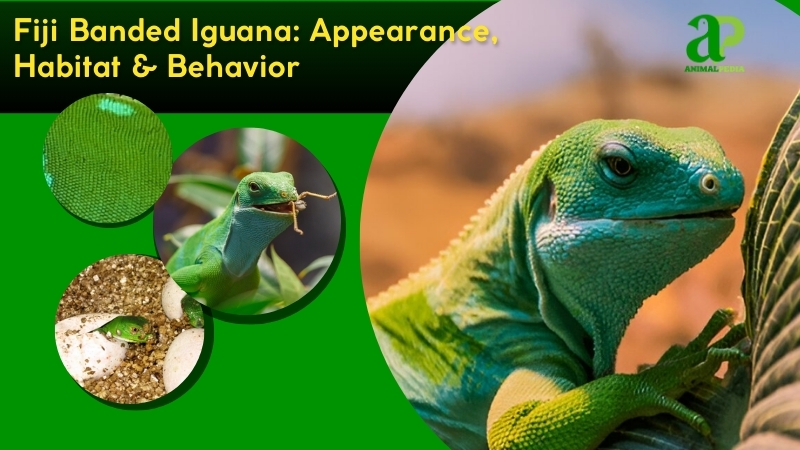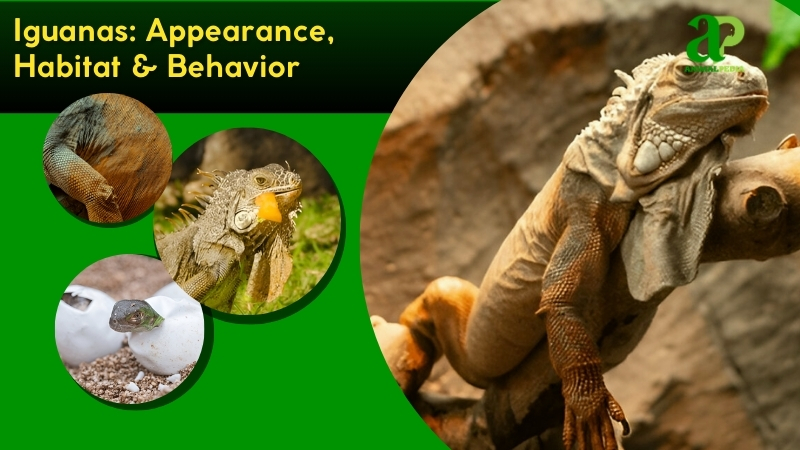The Common Chuckwalla (Sauromalus ater) is a large, herbivorous lizard species belonging to the family Iguanidae. They are notable for their robust, flattened physique and their unique defensive strategy of wedging themselves into rocky crevices and inflating their bodies to deter predators. Found in the hot, arid landscapes of the southwestern United States and northwestern Mexico, these reptiles are crucial components of their desert ecosystems.
They can grow up to 20 inches (51 cm) long and are a key indicator of environmental health. Their diet consists of desert vegetation, and their movements are primarily characterized by rock climbing and short bursts of running. The species’ conservation status is listed as Least Concern, but it faces threats from habitat degradation and climate-induced drought. This guide will provide a detailed overview of the common chuckwalla, from its taxonomic classification to its unique biological traits and ecological role.
This comprehensive guide will explore the lizard’s scientific classification, physical attributes, behavior, and its role within its habitat. We will examine what makes this animal a master of its arid environment.

What Is the Common Chuckwalla?
The common chuckwalla, Sauromalus ater, is a herbivorous lizard in the Iguanidae family, inhabiting rocky desert environments across the southwestern United States and northwestern Mexico, and is distinguished by its body-inflation defense mechanism. This reptile belongs to the Kingdom Animalia, Phylum Chordata, Class Reptilia, and Order Squamata.
Other common names include the northern chuckwalla or desert chuckwalla. Its name has its origins in indigenous languages, with “chuckwalla” derived from Shoshone “tcaxxwal” or Cahuilla “čaxwal,” as transcribed by Spanish explorers (7). The scientific name Sauromalus ater reflects its flattened form (“sauros,” “omalus” from Greek) and the dark coloring of males (“ater” from Latin) (7).
Recent phylogenomic studies reveal considerable cryptic diversity and deep phylogeographic structure within Sauromalus ater, indicating a mainland origin and subsequent divergence into insular species (12). Furthermore, research in 2023 indicates that S. ater and its food plants are vulnerable to warming temperatures and drought, which may alter their ranges across North American deserts (4).
Taxonomic debates persist regarding whether Sauromalus ater encompasses former S. obesus populations, with recent 2023 phylogenomics highlighting cryptic lineages that may justify subspecies recognition (12). Exploring its distinct physical appearance provides further insight into this unique animal.
Understanding its taxonomic definition lays a solid foundation, allowing us to now appreciate the unique physical traits that define the chuckwalla. These features allow it to thrive in such a demanding environment, and exploring them reveals an amazing story of adaptation.

What Does a Common Chuckwalla Look Like?
The common chuckwalla has a distinctive body shape, characterized by a robust, stocky, and dorsoventrally flattened physique, well-suited to its rocky desert environment (13). Its skin features small, granular scales with a rough texture, providing superior grip on rock surfaces (13).
Notably, the chuckwalla has loose folds of skin on its neck, sides, and abdomen, which it can inflate as a defensive mechanism to wedge itself securely into rock crevices (13). Adult males typically display a striking coloration with black heads, limbs, and tails, complemented by speckled tan or reddish midbodies. In contrast, females usually exhibit a more subdued brownish hue with scattered spots (13).
These mottled patterns provide excellent camouflage against the varied textures and colors of desert rocks, helping to avoid predators (13). The lizard’s coloration can also shift with temperature and mood, serving both thermoregulation and protective functions.
The common chuckwalla displays several distinctive physical characteristics that are vital to its survival in harsh desert conditions. These include its unique body shape, specialized skin and coat, prominent head and facial features, robust limbs and tail, and other specialized glands.
Here are the distinctive features of the common chuckwalla:
- Flattened Body Shape: The chuckwalla’s body is robust and stocky, yet remarkably flattened from top to bottom. This adaptation helps it navigate and conceal itself within narrow rock crevices (13). Its body can expand, further enhancing its defensive posture within these confined spaces (13).
- Granular Skin and Coat: Its skin is covered in small, granular scales, creating a rough texture that helps it grip rocky surfaces during climbing and maneuvering (13). Loose skin folds on the neck, sides, and abdomen allow the chuckwalla to inflate its body with air, effectively wedging itself into tight rock formations when threatened (13). The mottled patterns provide excellent natural camouflage in desert environments (13).
- Broad Head and Facial Features: The head is broad, rounded, and flattened, which facilitates both basking and navigating through tight rock fissures (13). Its medium-sized eyes feature brown irises and round pupils, protected by a nictitating membrane that shields them from dust and debris (13). Small, rounded nostrils on a short snout aid olfaction and are equipped with salt glands for excreting excess salts (13). The mouth, capable of wide gaping during threat displays, contains strong jaws fitted with pleurodont teeth. These numerous, small, flattened molars efficiently grind vegetation and can regenerate if lost (13).
- Sturdy Limbs: The chuckwalla possesses four short, powerful limbs, each equipped with curved claws (13). These limbs are crucial for terrestrial rock climbing and digging shallow burrows, providing stability and traction on uneven terrain (13). There is no webbing between the toes, reflecting its terrestrial adaptations.
- Thick Tail: The tail is thick at its base and gradually tapers to a blunt tip, typically measuring about half the total body length (13). It serves as a counterbalance during movement and can undergo autotomy, meaning it can detach to distract predators and allow the lizard to escape (13).
- Femoral Pores: Males exhibit visible femoral pores, which are specialized glands located on the underside of their thighs (13). These pores secrete waxy substances utilized for territorial marking, communicating their presence and boundaries to other chuckwallas within their habitat (13).
Sexual dimorphism is evident in chuckwallas. Males typically attain larger sizes, reaching up to 20 inches (51 cm) and 2 pounds (0.9 kg), and display bolder black colorations on their heads, limbs, and tails (13). Females, conversely, are generally smaller, growing up to 16 inches (41 cm) and weighing up to 1.5 pounds (0.68 kg). Their coloration usually appears mottled, and they tend to have narrower heads than males (13).
With these unique adaptations, these physical attributes determine the chuckwalla’s actual size. The following section explores the specific measurements of this desert reptile, including how its size compares between males and females.
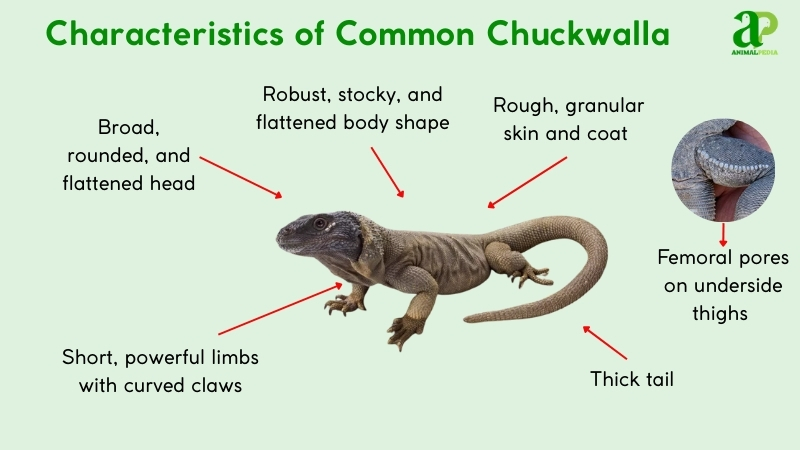
How Big Is a Common Chuckwalla?
Adult common chuckwallas typically average 15-18 inches (38-46 cm) in total length and weigh between 1-2 pounds (0.45-0.9 kg). This size range reflects the species’ adaptation to its environment and its largely herbivorous diet, both of which contribute to a robust build suitable for rocky habitats.
Chuckwallas exhibit clear sexual dimorphism in size. This table highlights the typical differences between males and females:
| Feature | Male | Female |
| Length | Up to 20 inches (51 cm) | Up to 16 inches (41 cm) |
| Weight | Up to 2 pounds (0.9 kg) | Up to 1.5 pounds (0.68 kg) |
| Record Size | 30 inches (76 cm) (Island populations) | Not significantly larger than average |
Developmentally, common chuckwallas undergo distinct growth stages (3). Hatchlings emerge at a length of 4-6 inches (10-15 cm) and weigh 0.2-0.3 ounces (6-9 g). As they mature into juveniles, typically by 1-2 years, their size increases to 8-12 inches (20-30 cm) and they weigh 0.5-1 pound (0.23-0.45 kg). Sexual maturity is reached between 2-3 years of age, with full adult size generally achieved by approximately 5 years (3).
Understanding the chuckwalla’s physical dimensions provides a foundation for appreciating its place in the ecosystem. Next, we will delve into where precisely these fascinating reptiles establish their homes and what specific environmental conditions they require to thrive.

Where Does Common Chuckwalla Live?
The common chuckwalla primarily inhabits rocky desert environments and lava flows across the southwestern United States and northwestern Mexico. Its geographic distribution spans southeastern California, southern Nevada, southwestern Utah, and western Arizona, extending into Baja California and Sonora, Mexico, and including approximately 30 islands in the Gulf of California (6, 8). These lizards thrive in arid landscapes, specifically the Mojave, Sonoran, and Colorado deserts, favoring outcrops and hillsides where abundant rock crevices offer shelter and protection (8).
The species requires a hot, dry climate, with preferred temperatures ranging from 70°F to 102°F (21 °C to 39°C) and humidity levels between 10% and 30% (1). During colder periods, typically from November to February, chuckwallas enter brumation, a state of dormancy that allows them to conserve energy (1).
Males display conditional territorial behaviors, marking their areas with secretions from their femoral glands and defending them through ritualized push-ups and head-bobbing displays (1). Hierarchies among males are often established on the basis of size and access to essential resources (1).
Knowing the chuckwalla’s habitat reveals much about its survival strategies. The next step is to explore the essence of its existence, which lies in its daily and seasonal activities. We will now investigate how this reptile behaves within its arid home.

How Does Common Chuckwalla Behave?
The common chuckwalla exhibits behaviors primarily centered on thermoregulation, foraging, and defense, reflecting its adaptations to an arid, rocky habitat. Its daily activities involve basking and feeding, while seasonal changes influence periods of activity and dormancy.
Its behaviors can be categorized into three main areas:
- Diet and Feeding: As a herbivore, the chuckwalla selectively forages on desert vegetation, preferring moist leaves and yellow flowers.
- Movement and Abilities: This lizard is adept at terrestrial rock climbing and employs rapid bursts of running over short distances, along with specialized defensive tactics.
- Daily/Seasonal Patterns: Chuckwallas are diurnal, regulating their activity cycles by daily temperatures and entering brumation during the colder winter months.
A detailed examination of these categories offers deeper insight into the chuckwalla’s behavioral ecology, beginning with its dietary habits.
Diet and Feeding
The common chuckwalla is a herbivore that primarily consumes leaves, flowers, and fruits, with incidental ingestion of insects. This species is classified as a folivore and frugivore, signifying its reliance on plant matter (13). Its diet heavily features creosote bush, comprising approximately 40%, brittlebush at about 30%, and ragweed, which accounts for around 20% of its intake. Incidental insect consumption makes up roughly 10% of its overall diet (13).
Chuckwalla forages by climbing vegetation, actively seeking out moist leaves and yellow flowers (13). They do not engage in hunting behaviors for animal prey. A specialized adaptation includes their efficient gut microbes, which are crucial for digesting high-fiber cellulose found in their plant-based diet, allowing them to extract nutrients effectively from tough desert flora (13). Their feeding patterns are closely tied to the availability of fresh vegetation, often increasing after periods of rainfall.
Beyond its dietary preferences, the chuckwalla’s mobility is equally crucial for navigating its challenging environment. The next section explores how this desert lizard moves and what special physical capabilities it possesses.

Movement and Abilities
The common chuckwalla moves primarily through terrestrial rock climbing, short bursts of running, and digging burrows. These methods are essential for navigating its rocky desert habitat and evading predators.
Specific movement abilities include:
- Terrestrial Rock Climbing: Chuckwallas use their strong limbs and curved claws to scale rocks and navigate complex rocky terrains, providing access to food sources and refuges (13).
- Short Bursts of Running: They can achieve top speeds of approximately 5-7 miles per hour (8-11 km/h) over short distances, typically 10-20 feet (3-6 m), which is crucial for fleeing immediate threats (13).
- Digging Burrows: While not extensive excavators, they can dig shallow burrows for shelter, particularly in sandy areas or under rocks (13).
The species possesses specialized defensive abilities. Its primary strategy involves body inflation, where it rapidly inflates its lungs to wedge itself tightly into rock crevices, making it extremely difficult for predators to dislodge (13). The tail, which is thick at the base, can also undergo autotomy, detaching to distract predators while the lizard escapes (13).
Furthermore, its rough skin and curved claws provide a secure grip on rock surfaces, aiding in both locomotion and defense (13). Chuckwallas do not possess venom or produce foul odors as defensive measures (13).
The chuckwalla’s movements are perfectly suited to its environment, but its survival also depends on its daily and seasonal routines. We will now explore when this lizard is most active and how changing seasons affect its behavior.

Daily/Seasonal Patterns
Common chuckwallas are diurnal, meaning they are active during daylight hours, typically beginning their activity as temperatures rise in the morning and retreating to shelters as temperatures cool in the evening. Their daily activity cycle is largely dictated by thermoregulation and foraging needs.
The daily activity cycle unfolds as follows:
- Morning (Warm-up): Chuckwallas emerge from their overnight refuges to bask in the sun, raising their body temperature to an optimal $39^{\circ}$F ($102^{\circ}$C) for metabolism and activity (13).
- Mid-day (Foraging): Once sufficiently warm, they spend several hours foraging for plants, consuming leaves, flowers, and fruits, which form the bulk of their diet (13).
- Afternoon (Retreat): As temperatures peak or decline, they retreat to the cooler confines of rock crevices or burrows, avoiding extreme heat or preparing for the night (13).
Chuckwallas are most active during the warmer months of spring and summer, when food plants are abundant and ambient temperatures are suitable for their ectothermic physiology (13). During the colder periods, typically from November to February, they enter brumation, a state of metabolic slowdown and inactivity within their rock shelters, conserving energy until favorable conditions return (1).
This species does not exhibit migratory behavior; instead, it remains within its established home range, utilizing local resources and refuges year-round.
Having examined the chuckwalla’s daily rhythms and seasonal adaptations, our next step is to understand its reproductive cycle. It is fascinating to learn how these desert dwellers ensure the continuation of their species in such a challenging environment.
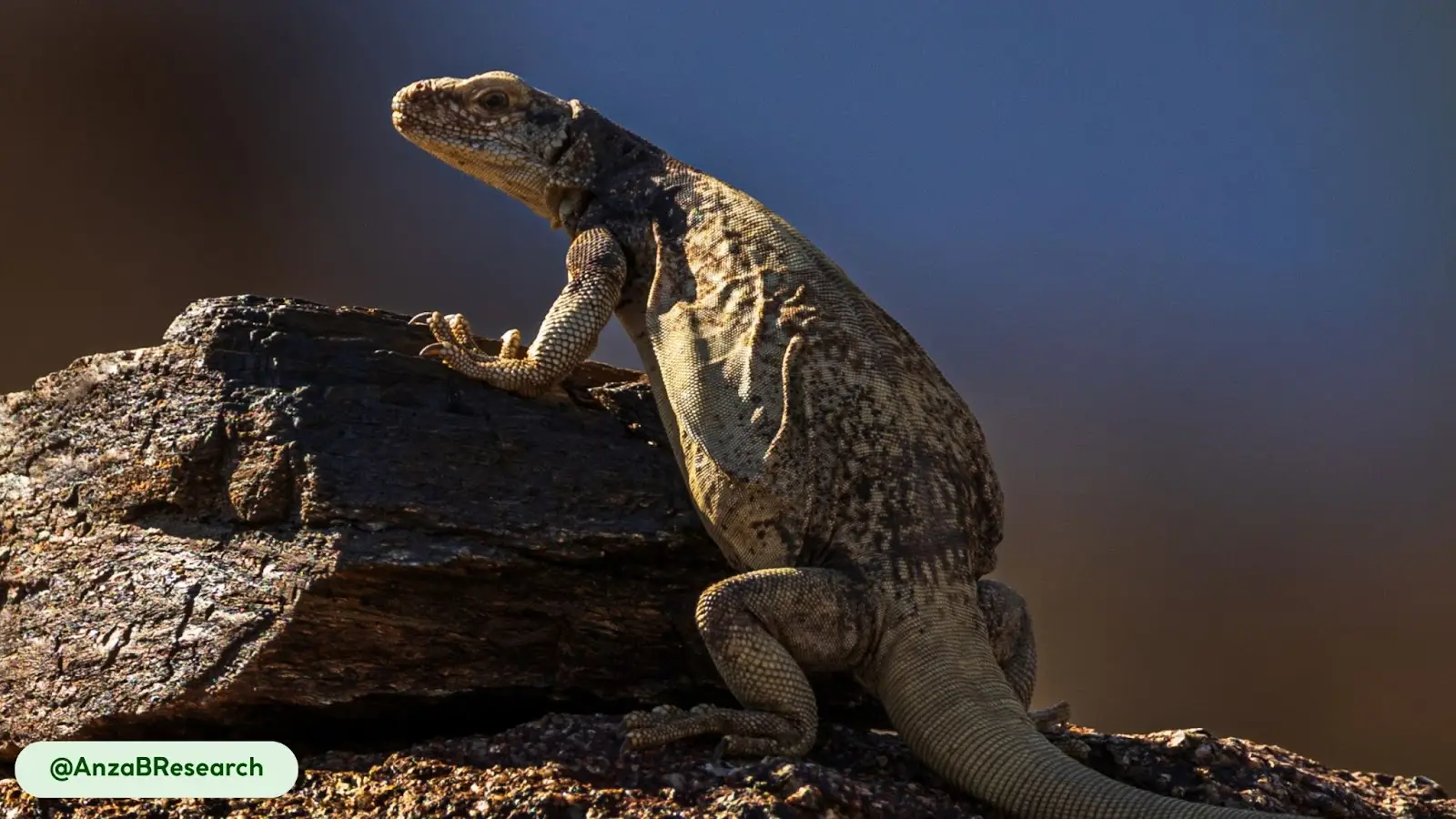
How Does a Common Chuckwalla Reproduce?
The common chuckwalla is an oviparous species, meaning it reproduces by laying eggs. The mating season for these lizards occurs during the warmer months, typically from April to July. During this period, males engage in a series of distinct courtship behaviors to attract females and assert dominance (13).
These rituals involve head-bobbing, circling, licking, and jaw-rubbing (13). Territorial aggression is also prominent among males, with displays of biting and head-butting to establish male hierarchies and secure access to mating opportunities (13).
Females typically lay a clutch ranging from 5 to 16 eggs. After oviposition, the eggs undergo an incubation period lasting approximately 33 to 50 days, with an average duration of 35 days (13). Research indicates that incubation temperature may influence hatchling sex (13).
Upon hatching, the young chuckwallas are precocial, meaning they are relatively mature and mobile from birth (13). Parental care in this species is minimal; females briefly guard their nests but provide no post-hatch care for their offspring (13).
Understanding the chuckwalla’s reproductive process naturally leads to another fundamental question about its existence. It is essential to understand the typical lifespan of these resilient desert reptiles and the factors that contribute to their longevity.
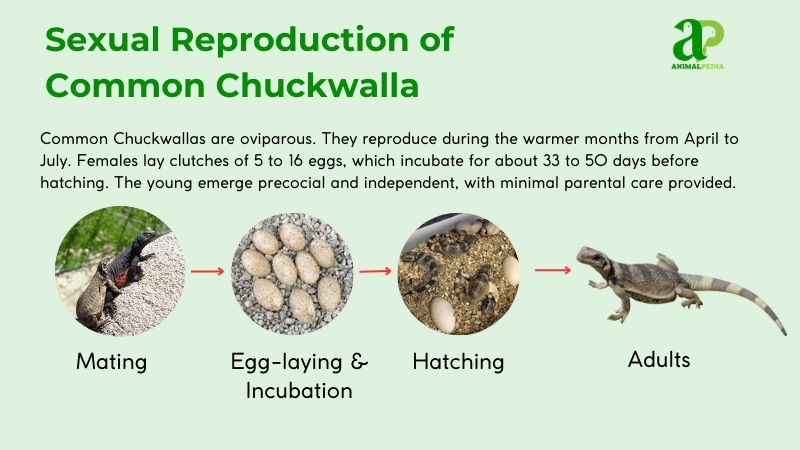
How Long Does a Common Chuckwalla Live?
Common chuckwallas live an average of 15-25 years in the wild, with some individuals reaching up to 30 years. In captivity, their lifespan significantly increases, averaging 25-30 years and potentially reaching 65 years (13). This considerable difference underscores the impact of environmental factors on longevity.
Chuckwallas reach sexual maturity between 2 and 3 years of age, attaining full adult size by approximately 5 years (3). Several factors influence their lifespan. In the wild, diet quality, which depends on vegetation availability post-rainfall, plays a significant role (13). Habitat stability, which offers secure rocky refuges, and the presence of natural predators, such as birds and snakes, also directly impact survival rates (13). Diseases and parasites can also affect their health and longevity (13).
Knowing how long a chuckwalla lives helps us appreciate its long-term presence in desert ecosystems. Next, we will explore how these reptiles interact with humans and the various ways their contributions benefit our environment and culture.
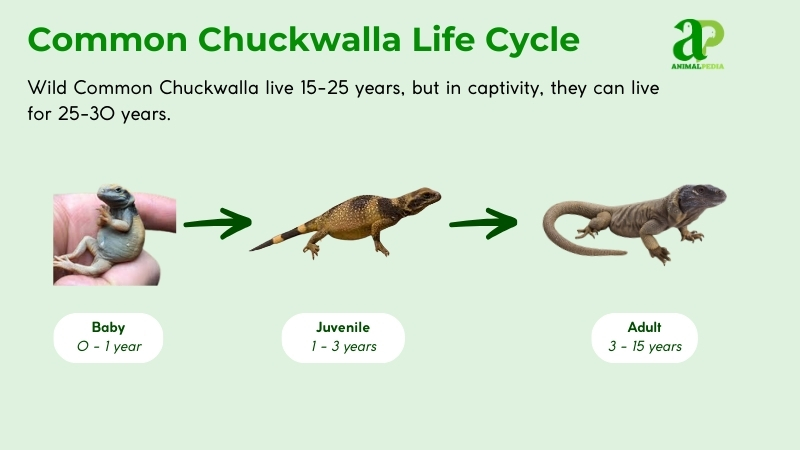
Is Common Chuckwalla Beneficial to Humans?
The common chuckwalla benefits humans through its ecological roles, cultural significance, and contributions to scientific understanding. These lizards promote plant propagation and vegetation cycling through their herbivorous diet, which aids the health of desert ecosystems (13). They also serve as an important prey base for various desert predators, maintaining a balanced food web (13).
Beyond ecological services, chuckwallas hold cultural importance as symbols of desert resilience in Native American folklore (13). Historically, indigenous peoples hunted them for food, employing techniques such as deflating individuals wedged in rocks (13). In contemporary contexts, chuckwallas contribute to ecotourism and educational programs in protected areas like Joshua Tree National Park (13). They are also subjects of scientific research, particularly in climate change studies, offering insights into how desert species adapt to environmental shifts (4, 13).
Given the benefits Chuckwallas offer, it is natural to question their status amid environmental challenges. We will now investigate whether these resilient desert dwellers are currently threatened with extinction.
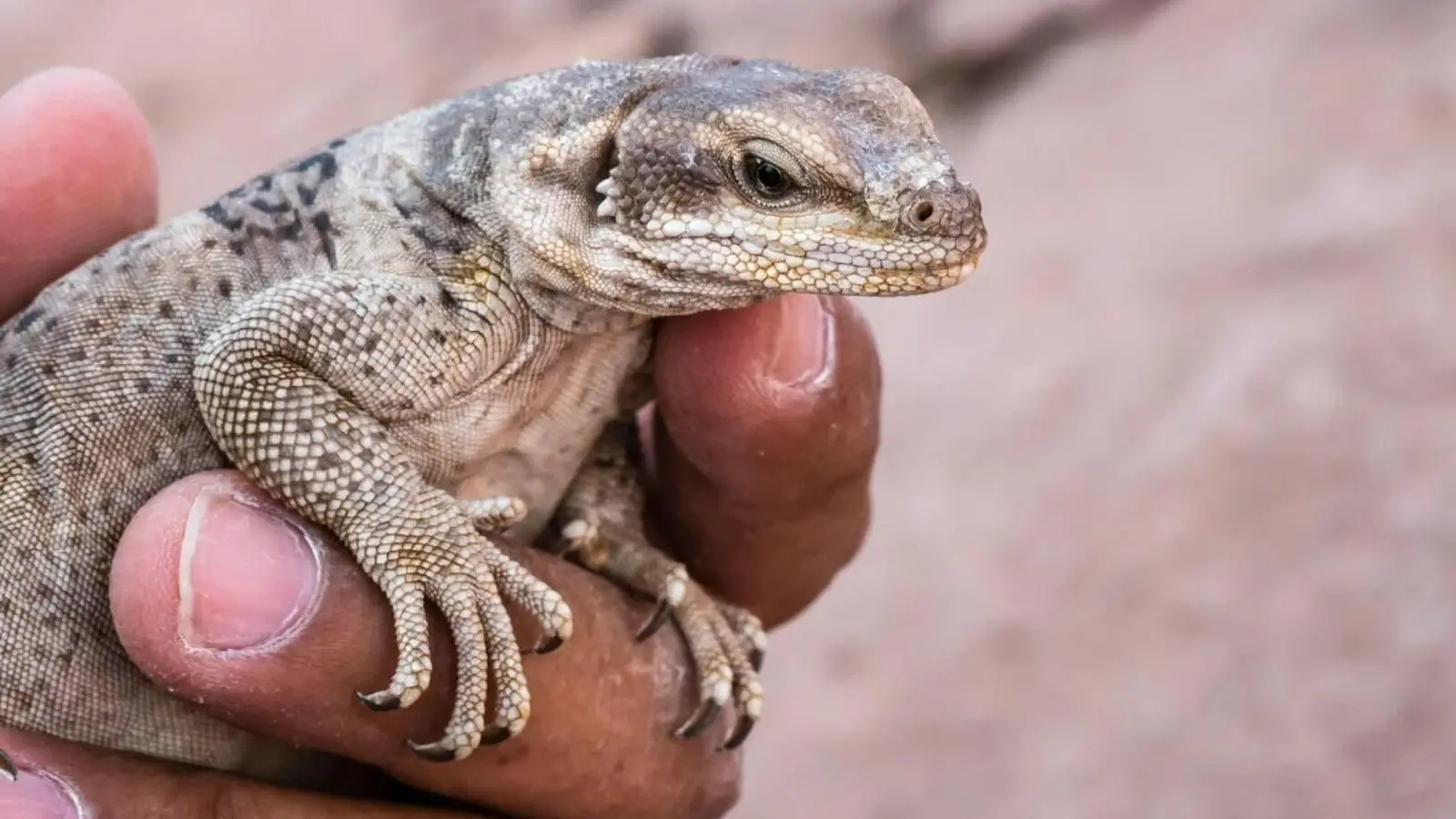
Common Chuckwalla benefits humans by supporting desert ecosystems through plant cycling, serving as prey for predators, and holding cultural and scientific value.
Is the Common Chuckwalla Endangered?
No, the common chuckwalla is not endangered. Its current conservation status is Least Concern on the IUCN Red List, based on an assessment in 2007 with updates in 2024 (6). This designation indicates that the species has a widespread distribution and a stable, large population, and is not currently facing significant threats that warrant higher conservation concern (6).
Despite its “Least Concern” status, the chuckwalla does face several threats. The main challenges include habitat degradation from urbanization, dam construction, and extensive off-road vehicle use (6). Overcollection for the pet trade also poses a localized risk, alongside the broader impacts of climate-induced drought, which can reduce food availability and alter thermal regimes (4, 6).
The species plays an ecological role as an environmental health indicator due to its sensitivity to ecosystem changes. Conservation actions primarily focus on protecting chuckwallas in U.S. national parks and preserves, population monitoring in urban areas (11), and evaluating translocation programs for mitigation purposes (9).
Having explored the chuckwalla’s conservation status, we can now delve into some truly fascinating aspects of this desert dweller. The next section uncovers some of the most surprising and unique facts about this incredible reptile.
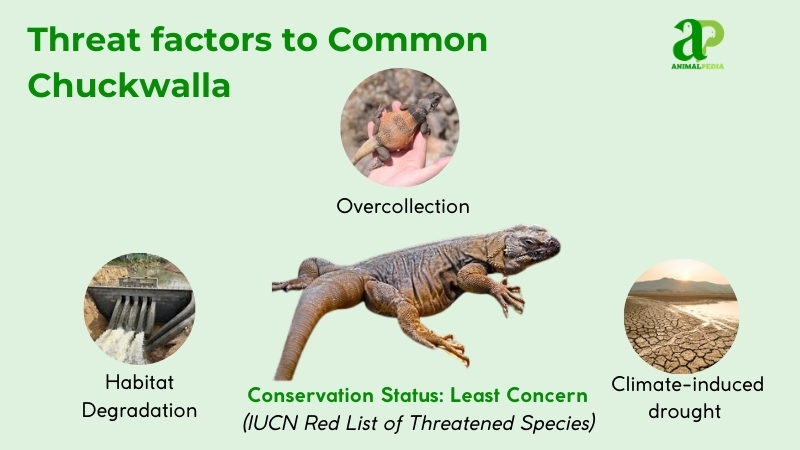
Frequently Asked Questions About Common Chuckwalla
How Do Common Chuckwalla Survive In The Desert?
Chuckwallas survive in the desert by regulating their body temperature, basking to reach optimal body temperatures, and seeking refuge in rock crevices to avoid extreme heat. Their herbivorous diet of desert plants, efficiently digested by specialized gut microbes, provides necessary hydration and nutrients (1, 13).
How can I spot a Common Chuckwalla in the wild without disturbing it?
To spot a chuckwalla without disturbance, look for them basking on dark rocks or near rock crevices during warm daylight hours. Their mottled coloration provides camouflage, so observing quietly from a distance is key. Avoid approaching to prevent triggering their defensive body inflation (13).
Are Common Chuckwallas good pets for beginners, and why or why not?
Common chuckwallas are not typically recommended for beginner pet owners. They require specialized care, including large enclosures, precise UVB lighting, and specific temperature and humidity gradients. Their long lifespan also demands a significant, long-term commitment from experienced keepers (5).
What should I do if I encounter a Common Chuckwalla during a hike?
If you encounter a chuckwalla on a hike, the best course of action is to observe it from a distance and avoid any physical interaction. Do not attempt to touch or feed it. Allowing it to continue its natural behavior without disturbance ensures both your safety and its well-being (13).
How has climate change affected Common Chuckwalla populations lately?
Recent studies indicate climate change, particularly warming and drought, significantly impacts chuckwalla populations by reducing the availability of their food plants and increasing heat stress. These changes predict potential range shifts and underscore the species’ vulnerability to environmental fluctuations (4).
Conclusion
The common chuckwalla stands as a testament to life’s tenacity in extreme environments, showcasing adaptations ranging from its unique body-inflation defense to its specialized diet. This desert inhabitant not only plays a vital role in its ecosystem but also offers valuable insights into animal resilience and environmental health. Animal Pedia aims to provide comprehensive, engaging information about these incredible species, fostering a deeper appreciation for Earth’s diverse fauna. We encourage you to continue exploring the animal kingdom with us to uncover more wonders and support wildlife education.

